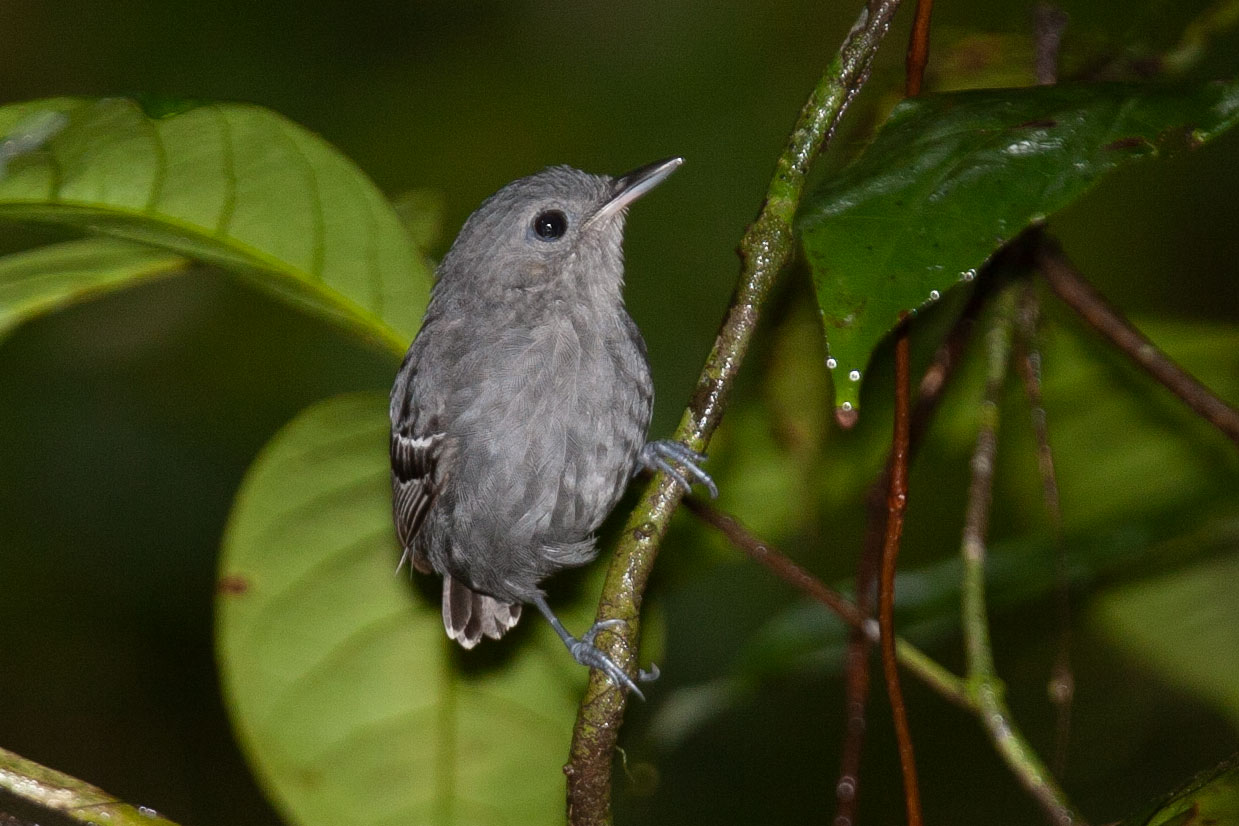Myrmotherula Hauxwelli Clarior: A Deep Dive Into The Amazonian Antwren
Share
The Myrmotherula hauxwelli clarior, commonly known as the Amazonian Antwren, is a fascinating bird species belonging to the family Formicariidae. This article explores the taxonomy, habitat, behavior, and conservation status of this unique bird, providing insights into its ecological role and tips for birdwatchers eager to observe it in its natural environment.

Taxonomy
The Amazonian Antwren is classified under the order Passeriformes and the suborder Tyranni. Its family, Formicariidae, includes various species known for their insectivorous diets and unique vocalizations. The species Myrmotherula hauxwelli was first described by Zimmer in 1932, with the subspecies clarior identified later. This bird is primarily found in Brazil, specifically south of the Amazon River, extending its range to parts of Bolivia.
Physical Characteristics
The Amazonian Antwren exhibits distinct physical traits that make it easily recognizable. It has a slender body, typically measuring around 10 to 12 centimeters in length. The plumage is predominantly brown with lighter underparts, providing excellent camouflage against the forest floor. Males and females exhibit slight variations in coloration, with males often displaying more vibrant hues.

Habitat
Myrmotherula hauxwelli clarior thrives in the dense, humid forests of the Amazon Basin. Its range extends from the right bank of the Madeira River eastward to the left bank of the Xingii River, ascending the Madeira to the Rio Roosevelt and up the Beni River in Bolivia. This bird prefers lowland tropical forests, often found in areas with thick underbrush where it can forage for insects and other small invertebrates.

Diet
The diet of the Amazonian Antwren primarily consists of insects, including ants, beetles, and other small invertebrates. This bird is known for its foraging behavior, often seen gleaning insects from leaves and branches. Its specialized feeding habits play a crucial role in controlling insect populations within its habitat, contributing to the overall health of the ecosystem.
Behavior
Myrmotherula hauxwelli clarior is a social bird, often found in small groups or pairs. It is known for its distinctive vocalizations, which include a series of high-pitched notes that serve as communication between individuals. The bird is also quite active, frequently moving through the underbrush in search of food. Its behavior is characterized by quick movements and a tendency to remain hidden, making it a challenge for birdwatchers to spot.

Reproduction
The breeding season for the Amazonian Antwren typically occurs during the rainy season when food is abundant. Nesting usually takes place in dense vegetation, where the female lays a clutch of two to three eggs. Both parents participate in caring for the young, providing food and protection until the chicks fledge. The success of their breeding efforts is closely tied to the availability of resources in their habitat.

Conservation Status
Currently, the conservation status of Myrmotherula hauxwelli clarior is not well-documented, but like many species in the Amazon, it faces threats from habitat destruction due to deforestation and agricultural expansion. Conservation efforts are essential to protect the delicate ecosystems of the Amazon Basin, which are vital for the survival of numerous species, including the Amazonian Antwren.
Birdwatching Tips
For birdwatchers interested in observing the Amazonian Antwren, the best approach is to visit its natural habitat during the early morning or late afternoon when the birds are most active. Look for them in dense underbrush and listen for their distinctive calls. Patience is key, as these birds can be elusive. Binoculars and a good field guide will enhance the experience, allowing for a closer look at this remarkable species.
In summary, the Myrmotherula hauxwelli clarior is a captivating bird that plays a significant role in its ecosystem. Its unique adaptations and behaviors make it a subject of interest for ornithologists and birdwatchers alike. Protecting its habitat is crucial for ensuring the survival of this and many other species that call the Amazon home. Observing the Amazonian Antwren in its natural environment is not just a rewarding experience but also a reminder of the importance of biodiversity and conservation efforts in one of the world's most vital ecosystems.